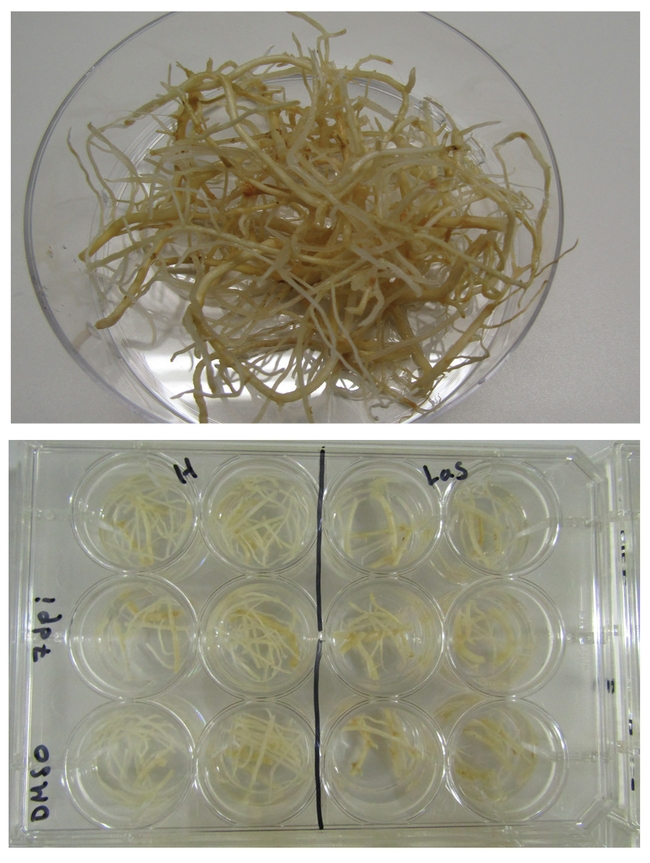
Candidatus liberibacter asiaticus (CLas), the bacterium thought to cause huanglongbing (HLB), cannot be grown using traditional laboratory methods in petri dishes on agar and nutrients. The inability to culture the HLB bacterium, CLas, in the lab makes it very difficult to develop a cure for the disease.
Dr. Kranthi Mandadi's research team has developed a novel technique for laboratory cultivation of CLas, using so-called hairy roots, which are plant tissues that mimic a microbe's natural environment. Hairy root cultures support CLas bacterial growth and these cultures can be used to screen antimicrobials to find compounds that control and/or suppress CLas. Once discovered, antimicrobials could be applied to citrus trees to prevent establishment or reduce the impact of HLB.
How does it work? Visit the Research Snapshot page to learn more: https://ucanr.edu/sites/scienceforcitrushealth/Research_Snapshots/Mandadi/
About Research Snapshots
